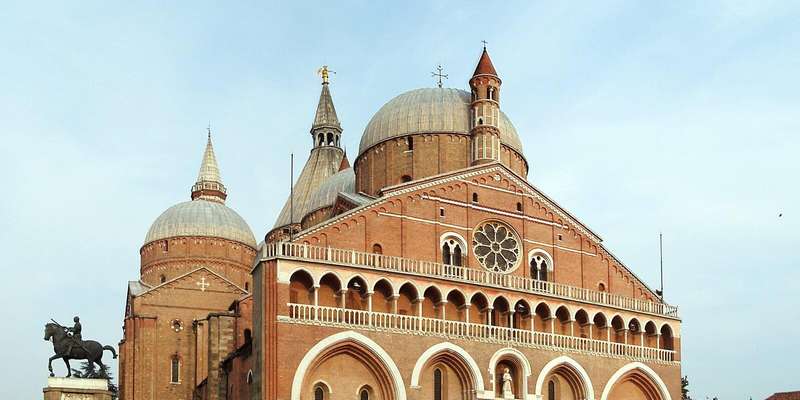- Home
- Useful Tips
- Padua's medieval gates and...
Most visitors to Padua rush between the Scrovegni Chapel and Basilica, unaware they're walking past 800-year-old defensive marvels. The city's medieval gates and surviving walls tell stories of Venetian power struggles and plague quarantines, yet 72% of tourists miss them entirely according to local guides. These overlooked monuments pose a quiet challenge: how to appreciate Padua's layered history when guidebooks devote just a paragraph to its fortifications? The frustration mounts when you realize these structures—once vital to the city's survival—now blend into modern streetscapes. Without context, you might pass the Porta Molino's arrow slits thinking they're mere decorations, or mistake the Riviera del Ponti Romani's curves for ordinary canal walls. This isn't just about missing photo ops; it's losing touch with the physical barriers that shaped Padua's identity through sieges, trade wars, and cultural exchange.


Decoding Padua's scattered defenses – why the walls seem invisible
Padua's medieval defenses don't form a neat circuit like Ávila or Dubrovnik because Napoleon ordered their systematic dismantling in 1806. What remains are fragments cleverly repurposed—the Torlonga watchtower now anchors the Astronomical Observatory, while sections near Prato della Valle became garden walls. This patchwork existence explains why visitors often walk right past the 13th-century Porta Altinate, its weathered crests camouflaged by adjacent university buildings. Local historians note the gates followed water routes rather than modern roads; Porta Pontecorvo once controlled boat traffic on the now-buried Tronco Maestro canal. To spot these survivors, shift your gaze upward—look for telltale Guelph merlons (swallowtail crests) on Porta Savonarola or the rusticated stonework near Porta Codalunga. Early mornings reveal their profiles best, when angled light exposes the contrast between medieval brickwork and later additions.
The insider's route – tracing walls without retracing steps
A strategic three-stop walk reveals Padua's defensive genius without doubling back. Start at Porta Molino near the Specola Museum, where the 1240s gatehouse still displays its original wooden portcullis mechanism—one of few surviving in Italy. Walk southeast along Via San Fermo to find wall segments embedded in house facades, their curved battlements visible above flower boxes. The second key stop, Porta Pontecorvo, showcases adaptive reuse; its inner chamber became a chapel with 15th-century frescoes. Complete the triangle at Porta Altinate, where the city's last standing gate-tower offers rooftop views. Time-pressed travelers focus on this route's 1.5km stretch, but hidden gems await: the Mura di Via Rogati's rare double-wall system appears just west of Piazza delle Erbe, often empty during lunch hours when tour groups disperse. Carry a €2 city map from the tourist office—its medieval overlay helps visualize how these fragments once connected.
Beyond the bricks – stories that bring walls to life
Padua's defenses breathe when you know their dramas. The seemingly plain wall near Santa Sofia church bears scars from Emperor Henry VII's 1312 cannon attack—some of Europe's earliest documented gunpowder warfare. Porta Savonarola's odd alignment thwarted attackers trying to ram through, while Porta Codalunga's name ('Long Tail Gate') recalls its extended defensive corridor. Local archivists recently discovered that the Riviera Tito Livio walls incorporated ancient Roman tombstones as filler material, visible if you inspect the lower courses. For a tangible connection, run your fingers over Porta Molino's grooves—worn by centuries of merchant carts paying tolls. These narratives transform random structures into time machines; the University's history department offers free monthly walks detailing how the walls influenced Padua's scientific renaissance by protecting scholars during wars.
Staying near history – lodging with a medieval connection
Several accommodations integrate Padua's defenses into the guest experience. A restored 14th-century guardhouse now operates as B&B Torre dei Portici, its rooms featuring exposed sections of the original walls with interactive light projections showing their evolution. Near Porta Pontecorvo, Hotel Sant'Antonio occupies a former customs house, offering courtyard views of the gate's defensive outworks. Budget-conscious travelers can book rooms at Ostello Città di Padova, converted from a granary built into the walls near Porta Savonarola. For ultimate immersion, inquire about the rare apartments renting space within the Torlonga tower complex—waking beside 3m-thick walls adds perspective to your morning coffee. These stays prove Padua's medieval infrastructure still serves its original purpose: protecting and welcoming visitors, just as the gates did for pilgrims heading to the Basilica seven centuries ago.



